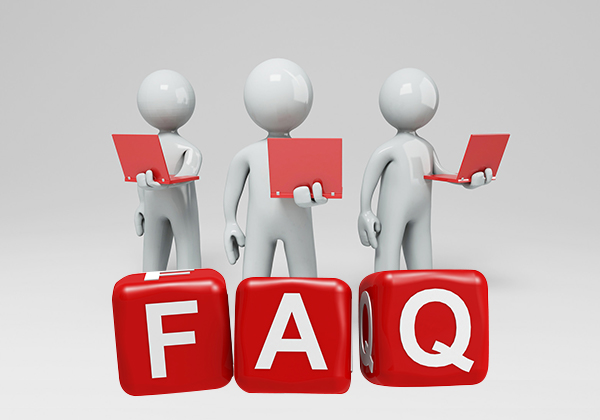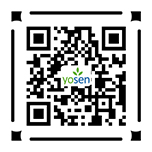This document aims to provide basic knowledge about the workplace prevention of COVID-19, caused by the SARS-CoV-2 virus, that is spreading worldwide. It provides small and medium-sized enterprises (SMEs) with an Action Checklist to assess COVID-19 risks and information for taking measures to protect the safety and health of their workers.
While these measures and recommendations are also expected to be useful against other outbreaks, in applying the Action Checklist some sectors or enterprises may identify additional controls that will be required. As knowledge about the virus and disease is constantly evolving, it is recommended that tools, measures and policies should be regularly updated to ensure state-ofthe-art preventive and remedial action, while always ensuring compliance with national laws and regulations.
2. ABOUT THE COVID-19 PANDEMIC
Over the past two decades, the world has witnessed a number of infectious disease outbreaks that have shown a high rate of spread.
Currently, concern is growing over the continuing spread of COVID-19 in some parts of the world and the challenge of sustaining a reduced rate of spread in others. Governments, employers, workers and their organizations face enormous challenges as they try to combat the COVID-19 pandemic and protect safety and health at work.
Box 1 – Key information on COVID-19
In January 2020 the World Health Organization (WHO) declared the outbreak of a new coronavirus disease in Hubei Province, China to be a Public Health Emergency of International Concern.
Two months later, on the 11th March 2020, the WHO declared the coronavirus COVID-19 outbreak as a pandemic.
What is a coronavirus?
Coronaviruses are a large family of viruses that are common in animals and may cause illness in animals or humans. Occasionally, people get infected with these viruses which may then spread to other people. In humans, several coronaviruses are known to cause respiratory infections ranging from the common cold to more severe diseases such as Middle East Respiratory Syndrome (MERS) and Severe Acute Respiratory Syndrome (SARS). The most recently discovered coronavirus causes coronavirus disease COVID-19.
How does COVID-19 spread?
When someone who has COVID-19 coughs or exhales they release droplets of infected fluid. If people are standing within one meter of a person with COVID-19 they can catch it by breathing in droplets coughed out or exhaled by them. In addition, most of these droplets fall on nearby surfaces and objects such as desks, tables or telephones. People can catch COVID-19 by touching contaminated surfaces or objects – and then touching their eyes, nose or mouth.
What is COVID-19?
Coronavirus disease (COVID-19) is an infectious disease caused by a newly discovered coronavirus known as the severe acute respiratory syndrome coronavirus 2 (SARS-CoV-2). The first human cases of COVID-19 were identified in Wuhan City, China in December 2019.
What are the symptoms of COVID-19?
The most common symptoms of COVID-19 are fever, tiredness, and dry cough. Some patients may have aches and pains, nasal congestion, runny nose, sore throat or diarrhea. These symptoms are usually mild and begin gradually. Some people become infected but do not develop any symptoms and do not feel unwell. However, according to current knowledge, around 1 in 6 cases of COVID-19 results in serious illness and the development of breathing difficulties. Those who are more likely to develop a serious illness include older people and people with underlying medical problems.
How long is the incubation period for COVID-19?
Estimates of the incubation period for COVID-19 range from 1-14 days, most commonly around five days.
3. WHY IS IT NECESSARY FOR YOUR ENTERPRISE TO PUT IN PLACE PREVENTIVE AND MITIGATION MEASURES AGAINST COVID-19?
This pandemic is having enormous economic and social impacts on workers in all sectors of the economy and all types of business, especially in SMEs and the informal economy, with an unprecedented reduction in economic activity and working time. The ILO estimates show that working hour losses have worsened during the first half of 2020, especially in developing countries. During the first quarter of the year, an estimated 5.4 per cent of global working hours (equivalent to 155 million full-time jobs) were lost relative to the fourth quarter of 2019. Working hour losses for the second quarter of 2020 relative to the last quarter of 2019 are estimated to reach 14.0 per cent worldwide (equivalent to 400 million full-time jobs). Data suggest that workers in developing countries, especially those in informal employment, have been affected to a greater extent than in past crises. The ILO estimates that almost 1.6 billion informal economy workers – 76 per cent of informal employees worldwide – are significantly impacted by the lockdown measures and/or are working in the hardest-hit sectors, such as wholesale and retail trade, manufacturing, accommodation and food services, in which women make up much of the workforce. In addition, the COVID-19 crisis is disproportionately affecting women workers in many ways, there is a risk of losing some of the gains made in recent decades and exacerbating gender inequalities in the labour market.
Beyond the immediate crisis, there are also concerns about resuming economic activity in a manner that sustains the progress made in suppressing transmission.
Although public health authorities worldwide are working to contain the COVID-19 outbreak, their efforts may not succeed unless enterprises put in place preventive and mitigation measures against the disease at their workplaces. In particular, it should be noted that:
· Employers have the overall responsibility for ensuring that all practicable preventive and protective measures are taken to minimize occupational risks and they can normally be sanctioned for violating or neglecting to observe national legislation.
· If the workplace is contaminated with the virus, it can be transmitted to people who interact with workers. This includes the families of your workers, suppliers, buyers and the public in general.
· Infection of workers can reduce productivity directly or indirectly in several ways and have a negative impact on the business, including:
· disruption to business and ongoing lost production from workers absence;
· reduced motivation to work, reduced workforce morale and increased absenteeism;
· costs of retraining workers for the job and possible recruitment of replacement workers;
· any fines or legal proceedings resulting from instances of ill health.
If your enterprise is not currently ready, you need to get ready NOW. Even if your country has reported few cases of the disease, immediate verification and/or action is strongly recommended to limit the pandemic. Preventive measures against COVID-19 could also prove useful in other health emergencies with similar characteristics. Employers and workers should start applying preventive and mitigation measures immediately, even if COVID-19 has not been detected in the communities in which they operate.
4. COVID-19 ACTION CHECKLIST FOR SMEs: OUTLINE AND HOW TO USE THE CHECKLIST
The COVID-19 Action Checklist for SMEs is a simple tool to assist SMEs in preparing their response to the COVID-19 pandemic by assessing the risk to the enterprise and ensuring that the workplace is prepared for the current and future epidemics (such as influenza). The Action Checklist includes five checkpoints (I to V) divided into 30 actions.
HOW TO USE THE CHECKLIST
1. Appoint a team including senior management, supervisors, workers’representatives, and responsible enterprise safety and health personnel.
2. Brief and train the team on the steps to implement the checklist (see checkpoints I to V and actions 1 to 30 set out below, as well as the additional detailed notes provided in section 5).
3. Complete the checklist and record your results.
4. Plan, as a team, what action should be taken, by whom and when. Look for a way to apply the measure and, if necessary, ask the area manager or workers for advice.
· If the measure has already been applied or is not needed, mark “NO” under “Do you propose action.”
· If you think the measure would be worthwhile, mark “YES”.
· Use the space under “Remarks” to add comments, describe a situation or add a suggestion.
5. Look again at the items you have marked “YES”. Choose the items that you consider to be most important and mark them as “Priority”.*
6. Immediately after completion of the checklist, organize a group discussion with the team to prepare suggestions to management (experience has shown that this step is essential for promoting positive change).
7. Present the results of the group discussion to management as the basis for planning the continuous implementation of the improvements.
The team should not hesitate to seek clarification from occupational safety and health (OSH) authorities, labour inspectorates, national safety organizations or national OSH professional ssociations, and employers and workers organizations.
This is not an exhaustive list of all necessary measures. The team should add to the checklist any additional items they consider appropriate to improving the response to COVID-19 at the workplace.
Management needs to comply with national legal obligations in establishing its workplace COVID-19 prevention and control plan.
* Priorities should be decided according to the greater or lesser probability of a given situation affecting the health of workers, its seriousness and its urgency.
I. COLLECT AND SHARE UPDATED INFORMATION 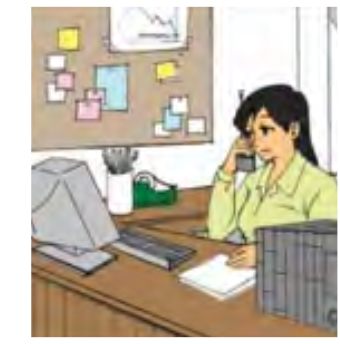
1)Regularly consult your occupational health services, local public health authority or other partners, who may have developed information materials to promote workplace prevention of risk of exposure to the virus and other technical advice.
Do you propose action?
NO □ YES □ Priority □
2)Establish a workplace system for providing up-to-date reliable information to workers on the emerging situation on COVID-19, with reference to information released by national or local health authorities.
Do you propose action?
NO □ YES □ Priority □
II. DEVELOP A COMPANY PREPAREDNESS PLAN 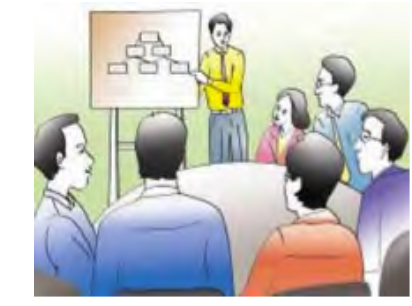
3)Develop and post a statement of management’s commitment and responsibilities to reduce the risk of exposure to the virus and transmission of COVID-19 at the workplace in consultation with worker representatives.
Do you propose action?
NO □ YES □ Priority □
4)Develop a preparedness and response plan for COVID-19 prevention at workplace, considering all work areas and tasks performed by workers and potential sources of exposure. 
Do you propose action?
NO □ YES □ Priority □
5)Integrate safety and health into your contingency and business continuity plan and consider other labour-related requirements, including which operations must be done with a reduced workforce.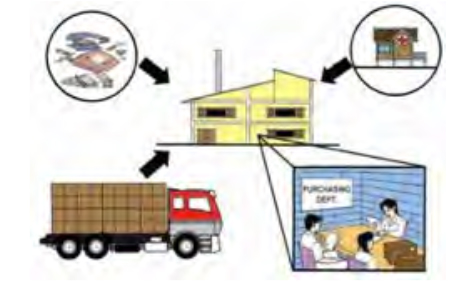
Do you propose action?
NO □ YES □ Priority □
6)Develop a plan for what to do if a confirmed or suspected case of COVID-19 is identified at the workplace that includes, among others, reporting, monitoring and disinfection in line with national guidelines.
Do you propose action?
NO □ YES □ Priority □
7)Establish a monitoring and evaluation mechanism for COVID-19 prevention strategies and plans. 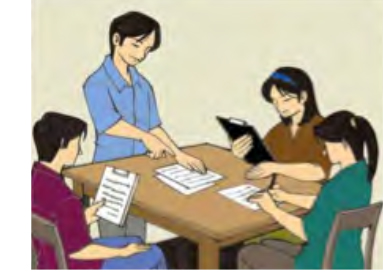
Do you propose action?
NO □ YES □ Priority □
III. CONDUCT A RISK ASSESSMENT
8)Map the hazards of all operations covering all jobs.
Do you propose action?
NO □ YES □ Priority □
9)Assess the risk of potential interactions among workers, contractors, customers and visitors at the workplace and contamination of the work environment, and implement measures to address the risks identified.
Do you propose action?
NO □ YES □ Priority □
IV. ORGANIZE WORK
10)Promote teleworking for non-critical workers to minimize the transmission of COVID-19 in your workplace. 
Do you propose action?
NO □ YES □ Priority □
11)If teleworking is not feasible introduce shifts to avoid large concentrations of workers in the facilities.
Do you propose action?
NO □ YES □ Priority □
12)Travel should be avoided if not essential. Assess the risk of COVID-19 infection when business travel is planned (for all phases of travel and job assignments).
Do you propose action?
NO □ YES □ Priority □
13)Avoid in-person meetings, giving preference to phone calls, email or virtual meetings. If you need to organize in-person meetings, organize the meeting space to allow for physical distancing.
Do you propose action?
NO □ YES □ Priority □
14)Train management, workers and their representatives on the measures adopted to prevent the risk of exposure to the virus and how to act in case of COVID-19 infection. For high-risk workers, such training should include the correct use, maintenance and disposal of personal protective equipment (PPE).
Do you propose action?
NO □ YES □ Priority □
15)Assist delivery workers, truck drivers and other transportation workers to minimize the direct contact with customers and ensure personal hygiene practices such as handwashing and use of hand sanitizers. Consider providing PPE if workers are in direct contact with clients.
Do you propose action?
NO □ YES □ Priority □
16)Organize work in a way to allow for physical distancing of at least 2 metres (6 feet) from other people or whatever distance is prescribed by the competent authority.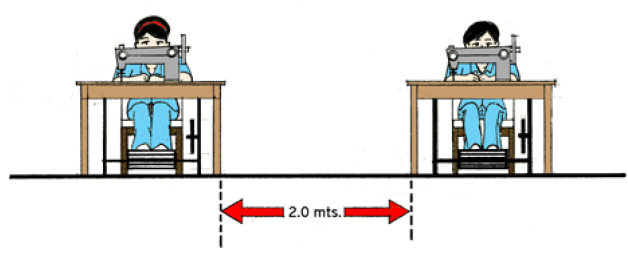
Do you propose action?
NO □ YES □ Priority □
17)Provide staff, customers and visitors with ample and easily accessible places where they can wash their hands with soap and water or disinfect their hands with sanitizers, and promote a culture of handwashing. 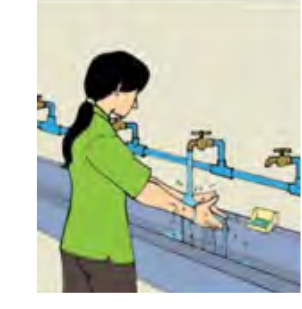
Do you propose action?
NO □ YES □ Priority □
18)Put sanitizing hand-rub dispensers in prominent places around the workplace and make sure that they are regularly refilled.
Do you propose action?
NO □ YES □ Priority □
19)Promote a culture of regular wiping of desks and workstations, doorknobs, telephones, keyboards and working objects with disinfectant, and also regularly disinfect common areas, including toilets. Surfaces that are touched frequently should be cleaned more often. Depending on specific operations, consider hiring cleaning and disinfecting services. 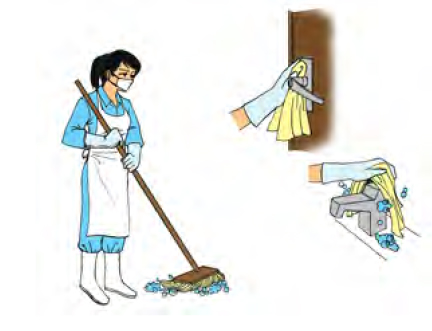
Do you propose action?
NO □ YES □ Priority □
20)Improve exhaust ventilation and increase the supply of clean make-up air in rooms and operations with a high risk of exposure to the virus.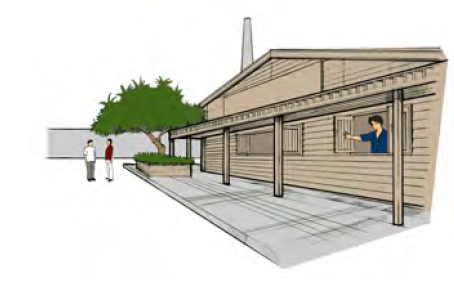
Do you propose action?
NO □ YES □ Priority □
21)Promote and communicate good respiratory hygiene at the workplace, such as covering the mouth and nose with a bent elbow or a tissue when coughing or sneezing.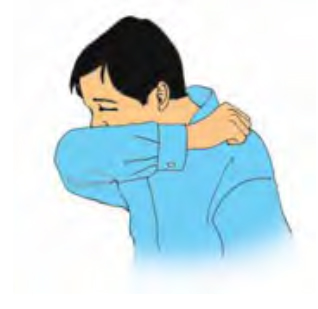
Do you propose action?
NO □ YES □ Priority □
22)Ensure social distance at the workplace and remain out of “congregate settings” (places where people meet and gather) as much as possible. 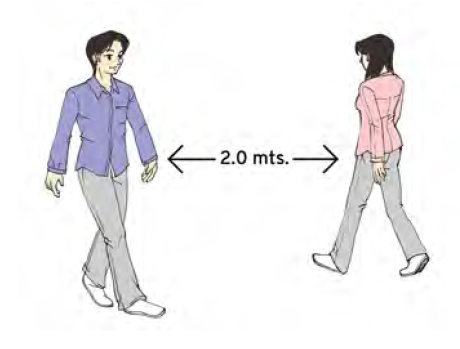
Do you propose action?
NO □ YES □ Priority □
23)Provide appropriate facemasks and make available paper tissues at worksites, for use by those who develop a runny nose or cough, along with closed bins for hygienically disposing of them. 
Do you propose action?
NO □ YES □ Priority □
24)Arrange for the isolation of any person who develops COVID-19 symptoms at the work site, while awaiting transfer to an appropriate health facility. Arrange for the disinfection of the work site and the health surveillance of persons who have or have had close contact with persons who have developed symptoms.
Do you propose action?
NO □ YES □ Priority □
V. PROTECT AND SUPPORT WORKERS
25)In line with national standards, expand access to paid sick leave, sickness benefits and parental/care leave and inform all workers.
Do you propose action?
NO □ YES □ Priority □
26)26Inform workers that they have a right to remove themselves from a work situation that poses imminent and serious dangers to their life or health, in accordance with national law and established procedures, and should promptly inform their immediate supervisor of the situation.
Do you propose action?
NO □ YES □ Priority □
27)Maintain regular communication with workers and workers’ representatives, including over the internet or, when that is not possible, over the phone.
Do you propose action?
NO □ YES □ Priority □

28)Assist workers in managing any emerging psychosocial risks or new forms of work arrangements and in promoting and maintaining healthy lifestyles, including with respect to diet, rest and sleep, exercise and social contacts with friends and family.
Do you propose action?
NO □ YES □ Priority □
29)In line with the guidance of local authorities, encourage workers with suspected symptoms of COVID-19 not to come to the workplace and to comply with other aspects of such guidance.
Do you propose action?
NO □ YES □ Priority □
30)Advise workers to call their health care provider or local public health department when they have a serious health condition, such as breathing problems, and to provide details of recent travel and symptoms.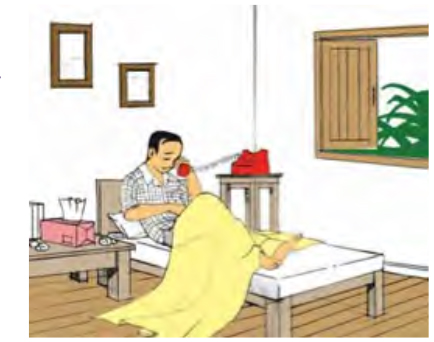
Do you propose action?
NO □ YES □ Priority □
5. COVID-19 ACTION CHECKLIST FOR SMEs: DETAILED NOTES ON CHECKPOINTS
Detailed notes on checkpoints I to V (including actions 1 to 30) of the COVID-19 Action Checklist for SMEs are provided below.
》 COLLECT AND SHARE UPDATED INFORMATION
》 DEVELOP A COMPANY PREPAREDNESS PLAN
》 CONDUCT A RISK ASSESSMENT
》 ORGANIZE WORK
》 PROTECT AND SUPPORT WORKERS
CHECKPOINT I. COLLECT AND SHARE UPDATED INFORMATION
1)SEEK INFORMATION AND SUPPORT
Regularly consult your occupational health services, local public health authority or other partners, who may have developed information materials to promote workplace prevention of risk exposure to the vius and other technical advice.
Notes: Specific and reliable information on COVID-19 has to be collected and analysed. It may include documents and other publications by national and international safety and health organizations and agencies or ministries of health, labour or transportation, as well as peer-reviewed scientific literature etc.
For instance, it is very important to know the number of COVID-19 cases in the area where the enterprise is located, as this is useful for assessing the risk of community transmission. The reliability of information sources is a very relevant point. Often during an epidemic, there is a rapid spread of information of all kinds from multiple sources, including rumours, gossip and unreliable information, which may create panic in the general population.
Due to the novel nature of the virus and ongoing progress in scientific knowledge, it is essential to ensure that the information obtained is frequently monitored and updated by real-time exchange of information, advice and opinions among health experts or officials.
2)PROVIDE INFORMATION
Establish a workplace system for providing up-to-date reliable information to workers on the emerging situation on COVID-19, with reference to information released by national or local health authorities.
Notes: Such information should be provided to workers in a user-friendly way that can easily be understood by all. It can also be shared with your customers, suppliers, neighbouring enterprises and other business partners.
CHECKPOINT II. DEVELOP A COMPANY PREPAREDNESS PLAN
3)STATEMENT
Develop and post a statement of management’s commitment and responsibilities to reduce the risk of exposure to the virus and transmission of COVID-19 at the workplace in consultation with worker representatives.
Notes: The clear commitment of top management builds a strong foundation for effective cooperation between employers and their workers. Invite the ideas and views of workers on how they may together protect their health and workplace from COVID-19 and future epidemics. For this, regular meetings should be held to collect their input.
4)PLAN
Develop a preparedness and response plan for COVID-19 prevention at the workplace, considering all work areas and tasks performed by workers and potential sources of exposure.
Notes: As part of OSH management systems, enterprises should make arrangements for emergency prevention, preparedness, and response for different scenarios, including outbreaks. Such arrangements should be adequate to the nature and size of the enterprise and established with the cooperation of external emergency services and competent authorities. Internal and external communication procedures should be well-defined and clear, including the readily accessible contact information of local emergency response services. First-aid, medical assistance, fire prevention and protection measures, evacuation routes and plans, as well as responsible personnel, should be prepared and equipped. Periodical training and drills should be carried out to ensure preparedness at all times.
A specific preparedness and response plan for COVID-19 prevention at the workplace should be developed in view of the above-mentioned considerations and integrated in enterprise OSH policies.
Workers should be involved in all steps of the development of such plans and their input should be encouraged and taken into consideration.
Such plans should provide practical ways to protect workers, including medical care, promotion of personal hygiene and changing the work organization (see checkpoints III and IV). This is a joint effort that allows all staff, workers and employers (managers) to feel proud and engaged as active participants in the pursuit of a safe and healthy workplace at all times.
5)BUSINESS CONTINUITY PLAN
Integrate safety and health into your contingency and business continuity plan and consider other labour-related requirements, including which operations must be done with a reduced workforce. 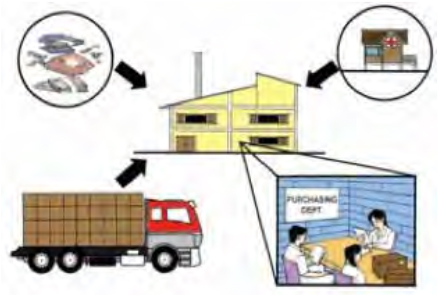
Notes: A business continuity plan that is developed with the full participation of workers will help to identify the risks that might affect a specific business or organization in a crisis and to devise strategies for reducing its impact.
The plan should cover key measures to keep the business running under extraordinary conditions due to the pandemic (telework, shift work and other unusual work arrangements with a reduced workforce), including with respect to the supply of raw materials, cash stock for emergency, cash flow from banks, means of transportation and product delivery to customers. The plan should be communicated to all workers, contractors and suppliers.
6)PLAN FOR CONFIRMED OR SUSPECTED WORKERS
Develop a plan for what to do if a confirmed or suspected case of COVID-19 is identified at the workplace that includes, among others, reporting, monitoring and disinfection in line with national guidelines.
Notes: Health surveillance is an important prevention measure. Enterprises should monitor the health status of workers, develop protocols for cases of suspected and confirmed COVID-19 and provide for the protection of medical and private data, in accordance with national law and guidance.
When workers who have had close contact with people infected with COVID-19 are identified, they should be directed to follow the instructions of the medical service or their health care professional and health authorities.
Protocols should be defined for workers who develop symptoms or are confirmed to have COVID-19 to stay at home. Posters should inform workers about the need to stay at home and seek medical care if COVID-19 symptoms appear. Such protocols should be communicated with all workers, such as by means of posters, and should be prominently displayed, including at the entrance of the enterprise. These posters should also provide information about hygienic measures (e.g. handwashing and respiratory etiquette, which are described below).
Administrative procedures should also be activated to ensure that workers receive the benefits established by law (see checkpoint V, action 25).
7)MONITORING AND EVALUATION
Establish a monitoring and evaluation mechanism for COVID-19 prevention strategies and plans.
Notes: The prevention strategies and plans should be regularly reviewed to ensure their continuing suitability.
The company preparedness plan should be fit for purpose. Prepare a draft plan and develop it stepby step, with updated information and requirements and new ideas.
A continuous monitoring of OSH conditions and appropriate risk assessments will be required to ensure that control measures are adapted to the changing situation of the outbreak, the specific evolving processes, the conditions of work and the characteristics of the workforce during the pandemic and afterwards. Enterprises should monitor occupational health services, local public health authorities and other partners for information, materials and technical advice.
CHECKPOINT III. CONDUCT A RISK ASSESSMENT
8)HAZARD MAPPING
Map the hazards of all operations, covering all jobs.
Notes: A hazard is anything that has the potential to cause harm to the safety and health of a person. For the assessment of the risk of COVID-19, the hazard is the virus responsible for COVID-19 and its characteristics, including transmission patterns and the persistence of the virus on different surfaces, should be considered for the purposes of hazard-mapping.
Walk around the workplace and look at what could reasonably cause exposure to the virus in order to identify which work activities and processes and which parts of the workplace have the potential to allow infection (person-to-person contact or person-to-possibly-contaminated-equipment contact).
Although hazard identification should be carried out under normal working circumstances, the pandemic poses the need to assess whether the risk is changing in response to different ways of working. For instance, it may be necessary to maintain production with a reduced number of workers. Operating with a reduced workforce may increase the probability of occupational accidents due to technical and human factors, such as less control of machinery, stress or fatigue..
9)RISK ASSESSMENT
Assess the risk of potential interactions among workers, contractors, customers and visitors at the workplace and contamination of the work environment, and implement measures to address the risks identified.
Notes: In order to take appropriate measures to protect workers from the occupational risks of exposure to the virus – as far as is reasonably practicable – employers should carry out a risk assessment.
Risk assessment is a process of evaluating the risks to safety and health arising from hazards at work.
Generally, occupational risk is the combination of the probability of the occurrence of a hazardous event and the severity of injury or damage to the health of people caused by such an event.
The assessment of the risk of contagion at work will therefore consider:
》 Probability of being exposed to the virus, taking into account the characteristics of the virus, including its transmission, such as person-to-person transmission through small droplets from the nose or mouth or transmission via objects and surfaces contaminated with droplets
》Severity of the resulting health outcomes, taking into account individual factors, including age, underlying diseases and health conditions, as well as the measures available to control the impact of the virus.
Risk assessment allows assessors to determine whether appropriate precautions are in place or whether more steps should be taken to prevent harm to those at risk, including workers, contractors, customers and visitors. Employers have the responsibility to revise assessments whenever there is a change to the work process and/or new risks are introduced or risk control measures are found to be insufficient or inadequate.
How to assess the risks in the workplace
Follow these five steps:
· Step 1 Identify the hazards.
· Step 2 Identify who might be harmed and how.
· Step 3 Evaluate the risk – identify and decide on the safety and health risk control measures.
· Step 4 Record who is responsible for implementing which risk control measures and the time frame.
· Step 5 Record the findings, monitor and review the risk assessment and update when necessary.
Actions to prevent and mitigate COVID-19 in the workplace should be implemented together with measures to address other occupational safety and health risks. Due care should be taken to avoid implementing measures to prevent virus exposure that create new sources of risk. Importantly, certain factors, including but not limited to safe commuting and the availability of safety-critical staff and services (maintenance, first aid, emergency services, etc.) should be assessed.
Collaboration with workers, managers and OSH staff is key. When risk assessments are completed, an action plan is prepared, indicating which risk control measures will be implemented. Following the hierarchy of controls, which establishes the order of priority for preventive and protective measures, such measures should first of all aim at eliminating the risk and, if this is not possible, at minimizing it. Collective measures that protect everyone will be preferable (such as teleworking,
screens, social distancing) and if necessary, they will be combined with individual measures such as PPE, which are the last line of defence.
The probability of exposure to the virus will increase with contact with more people. In turn, the probability of exposure will decrease by avoiding contact.
Any risk assessment needs to consider the entire working day, as well as the risks associated withcommuting to work, access to common area (such as cafeterias and sanitary facilities) and areas of the building where workers circulate.
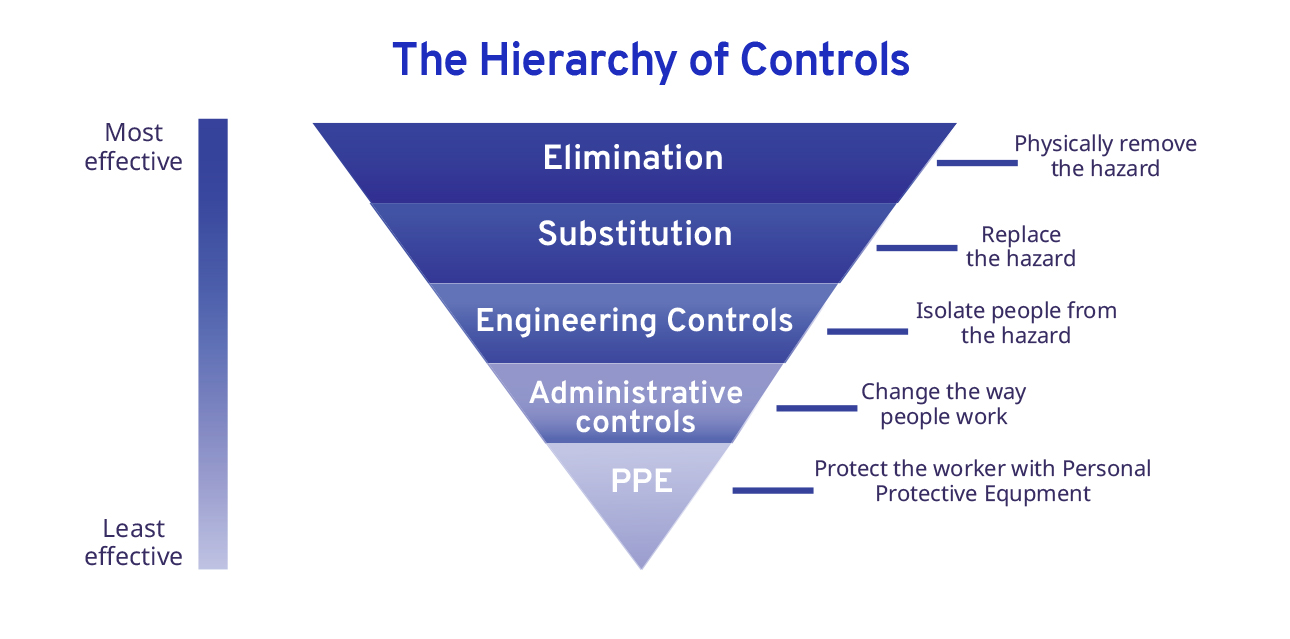
Elimination/substitution. Since it is not yet possible to eliminate or substitute the occupational hazard (virus) if the workplace reopens, a combination of other preventive measures is required to protect workers from exposure to the coronavirus.
Engineering controls. These include improving ventilation by increasing ventilation rates in the work environment; installing physical barriers, such as clear plastic sneeze guards; or installing a drive-through window for customer service.
Administrative and organizational controls. These include changes in work policy or procedures in order to reduce or minimize exposure to a hazard, such as introducing extra shifts; physical distancing; or good hygiene and infection control practices, directed at both workers and the workplace.
PPE. While engineering and administrative controls are considered more effective, PPE may also be needed to prevent certain types of exposure, in particular for the most hazardous occupations.
It is possible that mask use could create a false sense of security in the wearer, leading to diminished practice of recognized beneficial preventive measures such as physical distancing and hand hygiene.
CHECKPOINT IV. ORGANIZE WORK
10)TELEWORKING
Promote teleworking for non-critical workers to minimize the transmission of COVID-19 in your workplace.
Notes: Teleworking3 should be applied whenever possible as it represents a good preventive measure, especially for highrisk workers (workers with chronic disease, elder workers). The competent occupational health service provider or, where available, the occupational physician can indicate which workers should have priority if options for teleworking are limited. Family needs (such as workers with children or caring for elder or other high-risk family members) should also be considered as candidates for teleworking. 
Teleworking is an emerging option for work arrangements even in non-pandemic settings. Benefits for workers include a reduction in commuting time, greater working time autonomy leading to more flexibility in terms of working time organization, better overall work–life balance and higher productivity. Companies benefit from the improvement in work–life balance, which can lead to increased motivation, reduced turnover of workers and enhanced productivity and efficiency, as well as a reduction in the need for office space and associated costs.
To be effective, teleworking should be grounded in dialogue and cooperation between management and workers. This is even more important when teleworking occurs on a full-time basis. It is essential to provide teleworkers and managers with access to appropriate hardware and software, technical support and training. No less important is the need to ensure a safe work environment, which includes providing accommodation measures for people with disabilities and tackling cyber-bullying and domestic violence.
The possible challenges posed by teleworking (isolation, lack of in-person interaction with coworkers, managers and clients) should be adequately considered.
11)Shift work
If teleworking is not feasible, introduce shifts to avoid large concentrations of workers in the facilities.
Notes: When the nature of work does not allow teleworking, shifts are a possible measure to maintain employment levels while retaining a lower number of workers on the premises. This also helps to maintain a safe (physical and social) distance at the workplace.
Shift work should be planned based on business needs, safety and health obligations and workers’individual needs and preferences. Offer workers a choice among the available shifts based on their individual needs and preferences, such as their health status, domestic situation (such as family responsibilities) and individual differences or preferences (e.g. “morning person” vs. “evening person”).
12)Travel
Travel should be avoided if not essential. Assess the risk of COVID-19 infection when business travel is planned (for all phases of travel and job assignments).
Notes: All non-essential travel should be postponed. The risk of COVID-19 infection should be assessed for all the phases of essential business travel and job assignments. Necessary information includes travel restrictions and recommendations issued by national or international authorities, the latest information on areas where COVID-19 is spreading and health risks for travellers.
Make sure all travellers are briefed by a qualified professional on prevention measures and, if applicable, consider issuing small bottles of alcohol-based hand rub.
Public/collective transportation, particularly if used by large sectors of the population, such as subways, trains and stations (especially those serving large cities), can pose a high risk of exposure to the virus. Alternative means of transportation, such as walking while maintaining physical distance from others or using a bicycle or car, may be suitable options during the pandemic, although the first two options are preferable as they are environmentally friendly and allow healthy exercise.
13)Meetings
Avoid in-person meetings, giving preference to phone calls, email or virtual meetings. If you need to organize in-person meetings, organize the meeting space to allow for physical distancing.
Notes: Meetings should be avoided whenever possible and replaced by phone calls, videoconferences or e-mail exchanges. When meetings cannot be avoided, physical distancing must be ensured.
14)Training
Train management, workers and their representatives on the measures adopted to prevent the risk of exposure to the virus and how to act in case of COVID-19 infection. For high-risk workers, such training should include the correct use, maintenance and disposal of PPE.
Notes: Training programmes should cover all workers of the enterprise, should be conducted by competent persons and should cover the measures adopted to minimize the transmission of the virus in the workplace. This can include workplace hygiene, physical distancing, healthy behaviours, adjusted work arrangements (such as telework and staggered working hours and breaks), identifying and managing suspected COVID-19 cases and, when necessary, the proper
use of PPE.
15)Transportation workers
Assist delivery workers, truck drivers and other transportation workers to minimize the direct contact with customers and ensure personal hygiene practices such as handwashing and use of hand sanitizers. Consider providing PPE if workers are in direct contact with clients.
Notes: Transportation workers, such as truck drivers and delivery workers, should be instructed to limit their contact with customers, should ensure personal hygiene (handwashing/use of hand sanitizer) and should be granted access to toilets, changing rooms and if necessary to showers, while maintaining physical distance and proper hygiene. If direct contact with customers or other workers cannot be avoided, PPE should be provided by the employer. Payment operations should preferably be made by electronic means (bank transfer) or credit card via contactless methods whenever possible.
16) PHYSICAL DISTANCING
Organize work in a way to allow for physical distancing of at least 2 metres (6 feet) from other people or whatever distance is prescribed by the competent authority.
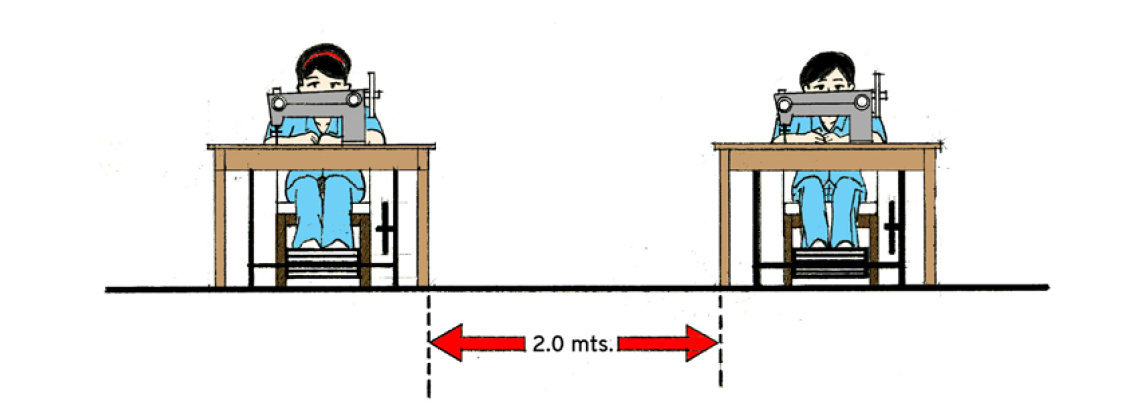
Notes: The workplace should introduce measures to keep a distance of at least 2 metres between people and avoid direct physical contact. Different countries may adopt a minimum standard of a different distance, therefore it is key to respect the physical distance prescribed by the competent authorities. As the law mandates a “minimum standard”, employers can always increase this distance if the premises and the type of work make it possible.
A distance of 2 metres between workers is suggested as adequate, unless national guidance or the results of risk assessments determine otherwise.
Where physical distancing of at least 2 metres cannot be implemented in relation to a particular activity, alternative mitigating actions may include staggered activities; placing workers to work side-by-side or facing away from each other rather than face-to-face; and installing partitions or barriers at all points of regular interaction and cleaning them regularly.
Partitions or barriers must be continuous (with no openings or gaps) and impermeable (waterproof in order to block any respiratory droplets) and should be transparent in places frequented by the public. They should not increase the risk of falling or tripping and they should not impede or delay a prompt evacuation from the enterprise in case of emergency (fire, explosion, earthquake etc.).

One-way use of passageways and staircases should be promoted and signposted accordingly.

Floor markings are also simple ways to mark the required physical distance at the workplace.
The start and the end of shifts may present a challenge for maintaining the correct physical distance, but organizational measures such as reducing contact among different sections of the enterprise at these times or instituting different start/finish times may provide a solution.
17) HAND WASHING
Provide staff, customers and visitors with ample and easily accessible places where they can wash their hands with soap and water or disinfect their hands with sanitizers, and promote a culture of handwashing.
Handwashing with soap and water using the WHO method is a simple and effective way to reduce the r isk of COVID -19.
Clean palms , fingers , wrists , and backs of both hands by using soap .
Wash your hands regularly and fre quently !
Notes: Personal hygiene should be ensured for everybody accessing the workplace, not only for staff but also for external workers (such as truck drivers), customers, inspectors or visitors. Install handwashing facilities or alcohol gel (60% strength) at the entrance and across the workplace/premises. Wash stations should be kept clean, should allow handwashing with water and soap and should be provided with facilities to enable hands to be dried and bins for the disposal
of materials used. Signs providing correct handwashing instructions should be displayed and easily visible in prominent places in order to promote good practices.
Establish a company practice that everyone washes their hands carefully. Display posters that show how to wash hands according to the WHO method.
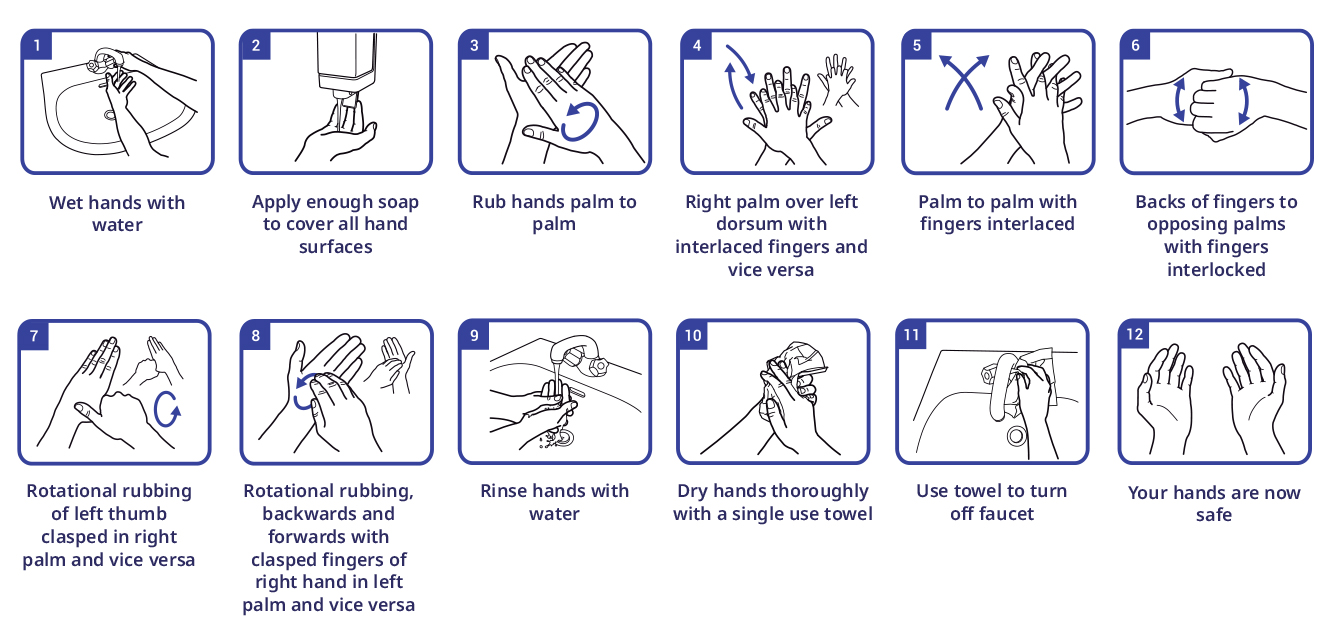
18)SANITIZER
Put sanitizing hand-rub dispensers in prominent places around the workplace and make sure that they are regularly refilled.
Notes: Regularly and thoroughly disinfect your hands with an alcohol-based hand sanitizer when you cannot use soap and water. Apply a coin-sized amount on your hands. There is no need to use a large amount of the product. Avoid touching the eyes, mouth and nose immediately after using an alcohol-based hand sanitizer as it can cause irritation. Hand sanitizers recommended for protection against COVID-19 are alcohol-based and therefore may be flammable. Do not use before handling fire or cooking or undertaking activities near an open flame, which could cause the sanitizer to ignite. Remember that washing your hands with soap and water is also effective against COVID-19.
Washing your hands with soap and water or using an alcohol-based hand rub kills viruses that may be on your hands. If hands are visibly dirty, wash them first with soap and water. If you use an alcohol-based hand sanitizer, make sure you use and store it carefully.
19)CLEANING
Promote a culture of regular wiping of desks and workstations, doorknobs, telephones, keyboards and working objects with disinfectant, and also regularly disinfect common areas, including toilets. Surfaces that are touched frequently should be cleaned more often. Depending on specific operations, consider hiring cleaning and disinfecting services.

Notes: Ensure the cleaning and disinfection of objects and surfaces that are touched regularly, such as desks and workstations, doorknobs, light switches, telephones, keyboards and working objects. Surfaces that are touched frequently, including common areas, kitchen and food preparation areas, bathrooms, toilets and work surfaces, should be cleaned and disinfected more often.
Depending on the operations, hiring cleaning and disinfecting services or assigning additional staff to such duties can be an option. The cleaning staff should work between shifts in order to avoid contact with others. The other staff should leave the premises tidy to avoid overwhelming cleaning work. Cleaning staff may be at higher risk of exposure to the virus and other hazards (such as chemical, physical and ergonomic hazards), therefore they need to be adequately trained on preventive measures. Employers should provide them with proper PPE including protective masks, rubber gloves (remember that the use of gloves does not substitute the need for regular hand hygiene!), aprons, caps and boots.
They will need waste bins lined with plastic bags that can be emptied without touching their contents. Tissues, sanitizers and disinfectants should always be available.
Company vehicles should also be regularly cleaned (door handles and interiors) and equipped with hand hygiene and disinfection products, paper towels and waste bags.
If possible, each cleaning staff member should use and care for their individual tools, which should be regularly cleaned and disinfected (particularly handles, surfaces and push-button switches). Collectively used equipment should be cleaned and disinfected between use by each user.
20)Ventilation
Improve exhaust ventilation and increase the supply of clean make-up air in rooms and operations with a high risk of exposure to the virus.

Notes: Increased ventilation by means of natural aeration or artificial ventilation is an effective measure to remove the virus associated with very fine droplets (those able to float in the air and travel longer distances). It also improves hygiene and air quality.
Opening windows on opposite sides of a room would be a feasible measure.
21 Respiratory hygiene
Promote and communicate good respiratory hygiene at the workplace, such as covering the mouth and nose with a bent elbow or a tissue when coughing or sneezing.
Notes: Respiratory hygiene is part of personal hygiene and consists in covering the mouth and nose with a disposable tissue or, in its absence, with a bent elbow when coughing or sneezing. This simple measure greatly limits the dispersion of respiratory droplets in the environment and decreases the risk of contaminating the hands. Dispose of the tissue immediately after its use in the nearest, closed waste bin and wash and dry (sanitize) the hands afterwards.

22) Social distancing
Ensure social distance at the workplace and remain out of “congregate settings” (places where people meet and gather) as much as possible.
Notes: The density of people in the building should be reduced by ensuring physical spacing of at least 2 metres for work sites and common spaces, including pantries and kitchens.
Tables and chairs should be placed far enough apart. Queues should be avoided, while the safety distance can be easily marked with adhesive tape floor markings in front of food counters, pick up and waste disposal points and wherever necessary. Serving times may be extended if necessary.
Where meal services are provided, providing boxed food and bottled drinking water would be an option in order to avoid gatherings in cafeterias, kitchens or canteens. The staff should be instructed to come into the room one by one in order to pick up their food and beverages.
Different time slots for food collection may be allotted for the various work teams or departments.
A large, clean and safe room, possibly with two doors to ensure a one-way flow of pedestrian traffic, is ideal for this purpose.
Signs should be posted at the entrance of restrooms and changing rooms to allow only one user at a time. Alternatively, adequate measures should be applied to ensure physical distancing (such as room dividers, partitions, etc.).
23)Masks and tissues
Provide appropriate facemasks and make available paper tissues at worksites, for use by those who develop a runny nose or cough, along with closed bins for hygienically disposing of them.
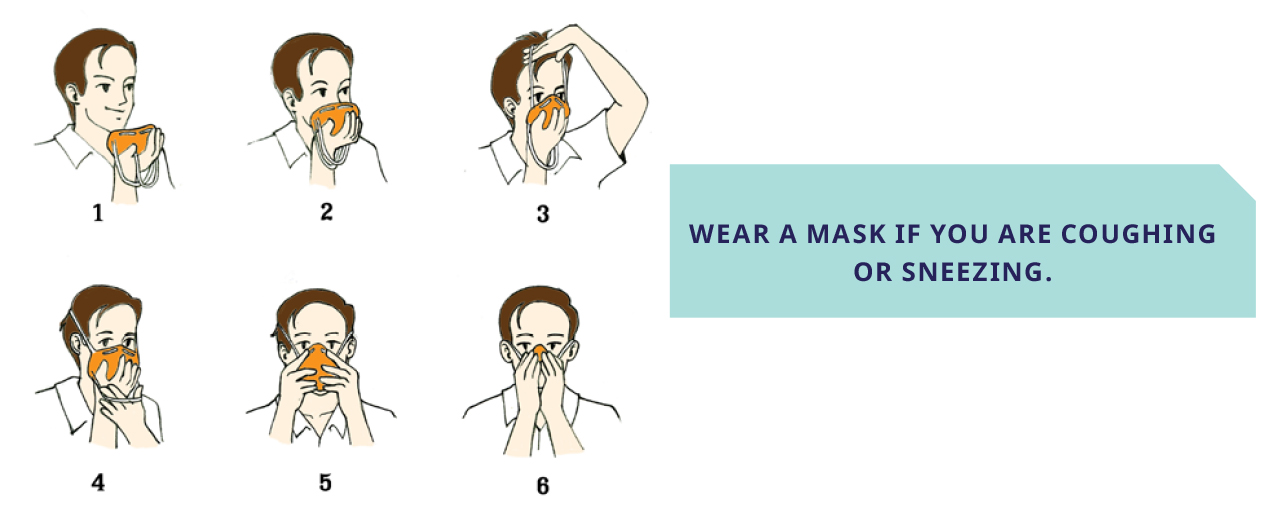
Notes: Appropriate masks should be provided for workers who develop symptoms (such as a runny nose or cough) together with closed waste containers to dispose of them. Disposable tissues should be made available for them.
24) isolation at the workplace
Arrange for the isolation of any person who develops COVID-19 symptoms at the work site, while awaiting transfer to an appropriate health facility. Arrange for the disinfection of the work site and the health surveillance of persons who have or have had close contact with persons who have developed symptoms.
Notes: In the event that any person develops symptoms at the workplace, arrangements should be made for their immediate isolation in a separate room. PPE should be delivered to them in a safe way. For example, it may be placed in the room where the symptomatic worker will be temporarily isolated before they access it. If that is impossible, it may be left at the door of the isolation room, where the symptomatic person can collect them without coming into contact with anybody. Employers should strictly comply with the instructions of local health authorities.
It is to be remembered that although the majority of COVID-19 patients show mild symptoms, severe symptoms (such as breathing problems) require urgent medical attention in an appropriate health care facility.
Enterprises should disinfect the work environment in accordance with the instructions of local health authorities. Enterprise collaboration should be provided in case co-workers and other people need to be traced as possible contacts of infected workers.
Workers who have had COVID-19 will return to work after fulfilling national or local health requirements. Any kind of discrimination, blaming or stigma should be avoided.
CHECKPOINT V. PROTECT AND SUPPORT WORKERS
25)Leave and benefits
In line with national standards, expand access to paid sick leave, sickness benefits and parental/care leave and inform all workers.
Notes: Where national legislation is silent on this matter, it is good practice for workers who have contracted COVID-19 to be paid sick leave or sickness benefits, for as long as they are incapacitated to work, in order to compensate for the suspension of earnings they suffer as a consequence. All workers are entitled to receive adequate information on regular or expanded benefits.
26)Information on workers’right to remove themselves from imminent and serious danger
Inform workers that that they have a right to remove themselves from a work situation that poses imminent and serious danger to their life or health, in accordance with national law and established procedures, and should promptly inform their immediate supervisor of the situation.
Notes: According to national law, inform staff of their right to remove themselves from any situation which they have reasonable justification to believe presents an imminent and serious danger to their life or health, as well as the need to immediately inform their direct supervisor.
27)Communication with workers
Maintain regular communication with workers and workers’representatives, including over the internet or, when that is not possible, over the phone.

Notes: Communication should be maintained with sick workers and their families, as well as with workers who are temporarily teleworking, in order to ensure the necessary company assistance and provide moral support.
28)Psychosocial risks
Assist workers in managing any emerging psychosocial risks or new forms of work arrangements and in promoting and maintaining healthy lifestyles, including with respect to diet, rest and sleep, exercise and social contacts with friends and family.
Notes: Ensure that new working arrangements (such as teleworking) properly function and do not generate or worsen psychosocial risks. During an outbreak such as COVID-19, the entire population is subjected to increased stress that can have serious effects on mental health, especially in cases where mandatory isolation at home is imposed. Feelings of uncertainty may accumulate, together with anxiety triggered by new working arrangements. This increases the need for strengthening contact with persons working from home and sick workers.
Keeping in touch with workers will also serve to identify whether workers need additional technical or psychosocial support.
More than ever, enterprises should encourage and advise their workers to adopt and maintain a healthy lifestyle, since a balanced diet and adequate sleep will positively influence the immune function, while exercise has a positive impact on mood. Exercise should be especially promoted among workers confined at home.
29)Stay at home
In keeping with the guidance of local authorities, encourage workers with suspected symptoms of COVID-19 not to come to the workplace and to comply with other aspects of such guidance.
Notes: Workers who develop symptoms of COVID-19 must not access the workplace. They should stay at home and follow the instructions of health authorities. Most countries have set up instructions for the public (such as special phone lines with 24-hour service by trained health care staff) to follow in case of having symptoms consistent with COVID-19.
Occupational health services oversee the monitoring of workers’ health at the workplace and are therefore responsible, among other functions, for tracking confirmed and suspected cases; tracing any potential contagion and instructing workers to quarantine; and notifying public health and social security authorities.
30)Advise workers
Advise workers to call their health care provider or local public health department when they have a serious health condition, such as breathing problems, and to provide details of recent travel and symptoms.
Notes: Calling your health care provider (such as general practitioner) or the local public health authorities after developing symptoms suggestive of COVID-19, especially if severe (such as breathing problems) is very important. Pertinent information (phone numbers and other contact information) should be available to all workers and posted at the workplace.
Information on recent travel (domestic and international) should be communicated to the health authorities since it may be necessary to trace, for instance, their travel contacts (passengers on the same plane, train or ship, business meetings attendants, hotel staff, etc.). In the case of business travel, the employer will be contacted.




